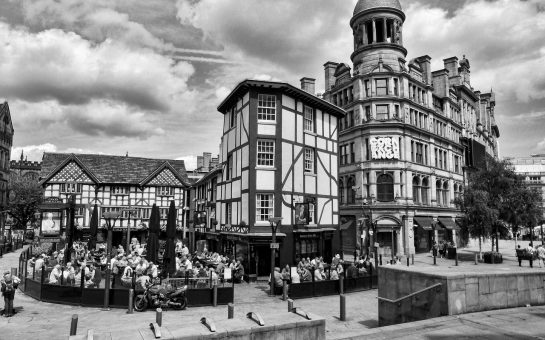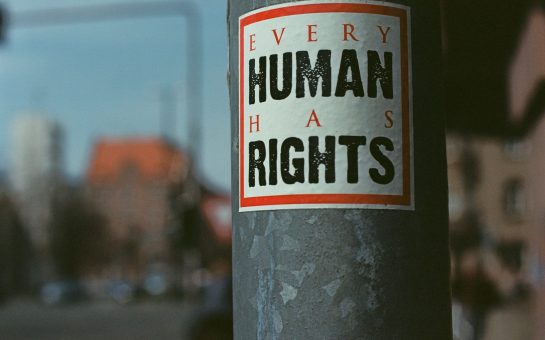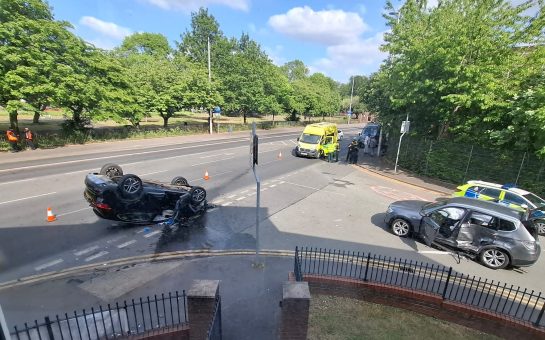Your walk home at night might be full of paranoid fears that there’s a hooded youth on every street corner ready to knife you for your iPhone because crime levels are soaring and the kids are out of control – but the statistics say otherwise.
The majority of crimes are falling year on year, according to figures from the Crime Survey of England and Wales (CSEW) published on July 17.
Violent crime fell by 20%, criminal damage fell by 17% and theft offences were down by 10%.
Yet these figures contrast with police recorded crime data, also released last week.
Nationally, police recorded crime shows no overall change from the previous year, with 3.7million offences recorded in the year ending March 2014 – the first time since 2002/3 that recorded crime has not fallen.
While not wanting to overstate the point, that’s more than a decade of recorded crimes falling, just to be clear.
Although the CSEW is unable to produce regional data, these are available for police recorded crime.
They reveal an ever-so-slight increase across Greater Manchester, from 180,364 in 2012/13 to 181,257 in 2013/14.
That’s an increase of just 0.49% for those not good at maths.
And if you were wondering how relevant that change is… statisticians would consider so small as to be insignificant.
Which begs the question: Why were last week’s news reports proclaiming this miniscule change as if it was the end of the world?
You can’t blame the MEN though.
This is stretching the facts to fit a political agenda – namely one driven by the Labour Police and Crime Commissioner aimed at attacking the government.
Crime in England and Wales has actually fallen by 14%, to its lowest level since 1981, according to the latest Home Office figures.
The rise in crime levels referred to on the Police and Crime Commissioner’s website actually refer to police recorded crime – figures that we have discussed at MM in the past.
As our previous analysis showed, police recorded crime data are not considered to be an accurate measure of crime – so much so that in 2012 the UK Statistics Authority, whose main function is to ensure that official statistics serve the public good, removed police-recorded crime data from official national statistics records because of their concerns about its accuracy.
This was highlighted by the HMIC (Her Majesty’s Inspectorate of Constabulary) earlier this year who found that 20% of reported crimes are not officially recorded by the police.
Our full analysis can be read here.
So police recorded crime levels in Greater Manchester show crime to have increased.
Yet before we panic and declare a state of emergency, we must not forget that the accuracy of police recorded crime data has been seriously questioned. Furthermore, the more reliable CSEW shows that crime is falling.
Even ignoring this – why might the stats show crime to have risen?
The renewed focus on the way that police record crime could be a key factor – due no doubt to the recent government reports which have been strongly critical of police compliance with crime recording standards.
This may well account for some, if not most, of the rise.
They also suggest that the high level of publicity given to historical sexual offences following the Savile scandal could be a factor. The 20% increase in historical cases of sex abuse being reported may have had an effect.
This is thought to have particularly impacted the police recorded figures for violence against the person (up 6%), and public order offences (up 2%).
However, when discussing the 7% increase in shoplifting, the ONS does suggest that this rise may well be due to a genuine increase in crime.
This shows that there are real issues within the survey that do require addressing but in overstating the case, by claiming far more than can actually be claimed, politicians run the risk of losing the faith of the electorate.
It is not helpful either to the police or to the public whom Mr Lloyd represents for their Police and Crime Commissioner to use these figures as a springboard to attack the government.
Well, in fact the figures do not really show this at all – but then an accurate reading of the figures would not allow the police and crime commissioner to justify his political argument.
To misrepresent these national crime data simply to score political points will do nothing to inspire public confidence in our elected representatives.
In fact, to claim crime is rising in such an alarmist manner only increases people’s anxiety and concern and damages public confidence.
Furthermore, misrepresenting statistics in this manner leads to a general distrust in all statistics and prevents a real and meaningful debate from taking place.
This will inevitably lead to a further erosion in our already fading belief that our politicians are there to serve us and equally inevitably to our growing belief that our democracy is increasingly dysfunctional.
The phrase, possibly by Mark Twain, comes to mind:
“There are lies, damned lies, and statistics.”



